Note: The city of Marion was first named Muckle’s Ridge, but was renamed in honor of Francis Marion, the “Swamp Fox,” hero of the American Revolution. Sam Houston, later of Texas fame, was married to a local girl in 1840 and Coretta Scott King, wife of Martin Luther King, was born in Perry County. She attended the Lincoln Normal School in Marion. Many antebellum public buildings are still standing in Marion.
(Below are Excerpts from EARLY ANTE-BELLUM MARION, ALABAMA: A BLACK BELT TOWN – transcribed from The Alabama Historical Quarterly, Vol 5, No. 2, Summer Issue 1943 – Note: Pictures & headlines added by D. Causey)
Marion owed settlement to economic and social readjustments
Like most other comparable towns in central Alabama, Marion (Perry County, Alabama) owed its settlement to the many economic and social readjustments made necessary in the country by the War of 1812. Of special significance, too, was the famous Treaty of Fort Jackson of 1815, which opened up to whites much of the territory that soon became part of Alabama.
Map of location of Marion (Wikipedia)
In 1813, the Tennessee River bend and lower Tombigbee, the important settled areas in eastern Mississippi Territory, had had a population of about thirteen thousand. Then, the War of 1812 and the Treaty of Fort Jackson brought settlers to Jackson, Lauderdale, Limestone and other counties. As a result, by 1816 the population figure for all of Alabama (eastern Mississippi) increased to more than twenty-five thousand. Large agricultural establishments were set up in Madison County; others appeared in the lower Tombigbee region; and settlers began arriving in Alabama from all directions.
By March 3, 1817, the white population passed the thirty-three thousand mark, and was finally, after several unsuccessful attempts, able to induce Congress to establish the Territory of Alabama. The important settled areas, too, had increased in number. Besides the older, established regions, people had moved into the upper Tombigbee and into the Mobile River Valley. By the summer of 1817, South Alabama (Mobile, Baldwin, Washington, and Clark Counties) claimed twenty of the thirty-five thousand people in the Territory. Two years later, when Alabama attained statehood its total population had reached more than seventy thousand In 1820, the total jumped to 127,000.2
Settlers from South Carolina and Tennessee
Meanwhile, some land later to be included in Perry County was gradually being taken up. In 1816, when the first permanent settlers from South Carolina and Tennessee arrived there they found all the characteristics of a frontier region. Indeed, for more than a decade after 1816, the area had little to offer in the way of cultural attributes. Few roads traversed the region and population increased slowly.
Little formal education or religion was evident for several years; and in 1816, despite the provisions of the Treaty of Fort Jackson, the land in the area was still partially held by Creek Indians. When settlers first arrived they found a large Creek establishment at a place known as Cahaba Old Town located at the point where Old Town Creek flows into the Cahaba River, about seven miles northeast of the present location of the town of Marion.
Earliest White Settlers moved from Georgia
White man’s encroachment was made in the area by the end of 1816, however, and in December a settler named Anderson West, who was perhaps the first permanent immigrant to the region today included in Perry County, built a log cabin near Old Town. About the same time establishments were also made near a place that became known as Perry Ridge, located a few miles south of Old Town. The earliest white settlers there probably were William Ford and his sons, John and Enos who had moved from Georgia. Within a year after their arrival, Perry Ridge had attracted enough people to become the most important settlement in the area3
Noteworthy events
During 1817 there occurred three events of particular importance in the development of the region. One was the construction by the Ford family of a sawmill and a grist mill near Perry Ridge, these mills being the first definitely palpable signs of white civilization in the area.
A second noteworthy event was the arrival in the Old Town vicinity of two enterpriting (sic) men by the names of Thomas M. Oliver and John Burden. Their special significance arises from the fact that immediately after their arrival they constructed a cotton gin, which, according to one source of information, was “the first cotton gin between the Warrior and Cahaba rivers.”4 Such an assertion is perhaps open to question but the construction of the gin at such an early date is important since it is evidence that cotton was already being grown, or that plans were on foot for its early cultivation.
Downtown Marion postcard ca. 1900 (Alabama Department of Archives and History)
It seems rather beyond all doubt that the plant was cultivated the next year, for, according to local tradition, in 1818 cotton bloomed as late as December 23 in Perry County.5 It is thus assumed that either 1817 or 1818 marked the beginning of a definite interest by the people of the area in the production of the white staple, an interest that gradually came to monopolize the interests and activities of. the farmers in the region and to influence significantly the entire history of Perry County until the present.
The arrival of Mickle Muckle
The third prominent event of 1817 in the preliminary developments of Perry County was the arrival there, in November, of a man named Mickle Muckle. As it happens, this man’s name was originally Michael McElroy, but his friends and relations had first changed his name to Muckleroy and then before his arrival in Alabama had begun calling him Mickle Muckle. Traditionally he is referred to by the last name.
It was he who first settled within the boundaries of the present town of Marion, the seat of Perry County. Some time in 1817 he arrived with his father-in-law, Nathan Reid, who became the founder of a family soon to be prominent in both the social and economic activities of the county. Also accompanying Reid was another son-in-law, Warner Young. Reid settled about eight miles west of the present site of Marion, Young took up land somewhat closer, and Muckle cleared about one acre of land at the exact location of the present day Perry County courthouse square, located in the center of Marion. The Muckle clearing soon acquired the title of “Muckle’s Ridge” and bore that title until May, 1822, when it was changed to Marion.6
Population increased rapidly after 1817
Meanwhile, although the Territory of Alabama was established in 1817 and the population in the Territory as a whole increased rapidly, only slight progress was made before 1819 in the vicinities of Perry Ridge, Old Town, and “Muckle’s Ridge.” The year 1818 was a hard one for the settlers because of failure of their corn crops. As much as three dollars per bushel was offered for corn but there was none to be had, and it was necessary to travel as far as the settlements in lower Tennessee to obtain supplies of food.7 This unfortunate condition retarded the growth of the region but nevertheless a few minor changes in the status of the area were apparent during the Territorial period.
Store in Marion, Alabama ca. 1946 by Walker Evans (Library of Congress)
Marion, Perry County, Alabama ca. 1935 by photographer Walker Evans (Library of Congress)
In 1817, hardly before he had settled, Mickle Muckle, the sole inhabitant of his Ridge, became dissatisfied because of “overpopulation” and sold his clearing to Anderson West. The latter added a few acres to the clearing,8 but for almost two years took Muckle’s place as the only inhabitant of the “Ridge.” Moreover, as late as the spring of 1819 the place was still little more than a wilderness. According to an early settler of the area, West’s residence “at this time, had nothing more to entitle it to peculiar attention, than any other private neighborhoods.”9 Perry Ridge, on the other hand, continued to attract settlers, and the importance of that place was both recognized and further enhanced during the Territorial period when a “rude log building” was constructed there for use as a courthouse.
1Southern grants-in-aid in 1940-41 and 1941-42 from the Social Science Research Council for a study of ante-bellum plantation practices in the Alabama black belt have made possible this article. Much of the material included here will appear later in a book length study entitled HUGH DAVIS AND HIS PLANTATION
2 See Thomas Perkins Abernethy, The Formative Period in Alabama 1815-1828 (Montgomery, 1922), 9-12, 17, 24-33 John W. Monette, History of the Discovery and Settlement of the Valley of the Mississippi (2 vol.., New York, 1846), Ii, 380, 388, 392, 446-47; Albert James Pickett, The History of Alabama…..(Sheffield 1896), 461; Thomas M. Owen, History of Alabama and Dictionary of Alabama Biography (4 vols., Chicago, 1921.) I, 14, 86; Charles S. Davis The Cotton Kingdom in Alabama (Montgomery, 1939), 11-14.
3The Marion (Alabama) Standard, Feb. 26, Apr. 2, Mar. 26, 1909. An early settler m Perry County was a person named Captain W. L. Fagin. About 1886 a history of Marion Alabama was published by Fagin in the local newspaper, The Manon Standard. Later, in the first few months of 1909, the history was reprinted in the same newspaper. It is from this reprint, entitled “History of Marion, 1818-1835,” that much of the information about early developments in Marion has been obtained for use in this article.
4Ibid., Apr 2, 1909
5Ibid., Feb. 12, 1909
6Ibid., Feb. 26, 1909
7Idem
8Ibid., Feb. 12, 26, 1909: see also S. A. Townes, The History of Marion, Sketches of Life, etc. in Perry County, Alabama (Marion, 1844), 9.
9The Marion Standard, Feb. 12, 1909.
SOURCE
EARLY ANTE-BELLUM MARION, ALABAMA: A BLACK BELT TOWN PART I By Weymouth T. Jordan – (Dr. Jordan was assistant professor of American history at Alabama Polytechnic Institute. He held the B. S. degree from North Carolina State College and the M. A. and Ph. D. degrees from Vanderbilt University. He taught at Judson College, John B. Stetson University, Transylvania College, Blue Mountain College, and the University of Oklahoma. Various historical articles of his have appeared in Agricultural History, Alabama Historical Quarterly, Journal of Mississippi History, East Tennessee Historical Society’s Publications, and Journal of Southern History


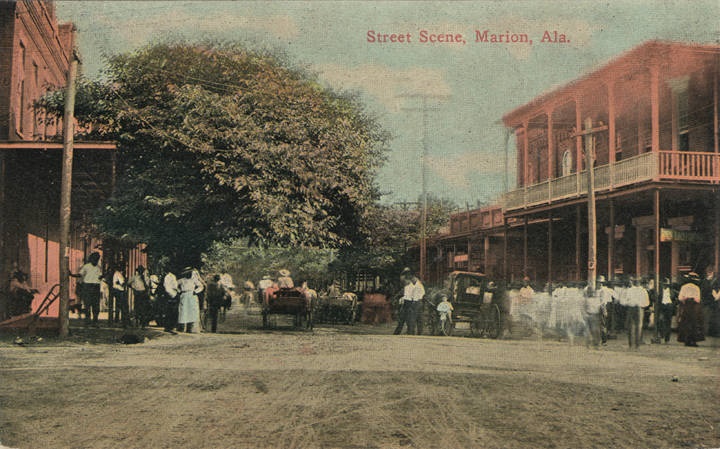
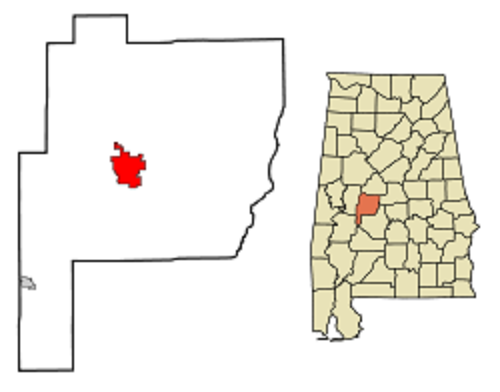
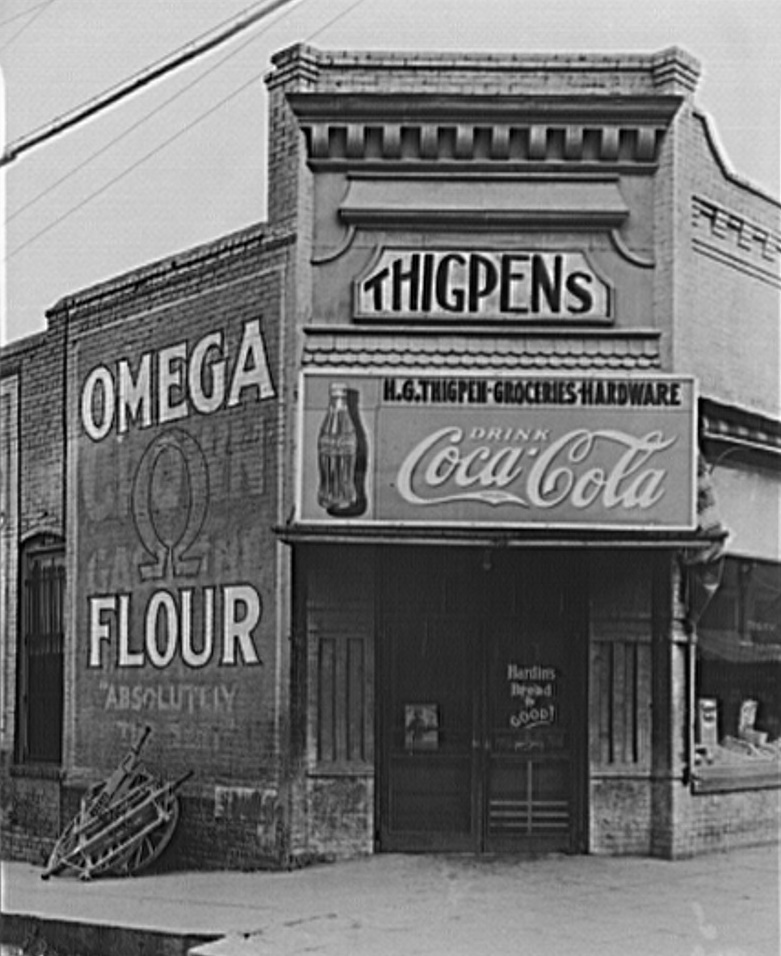
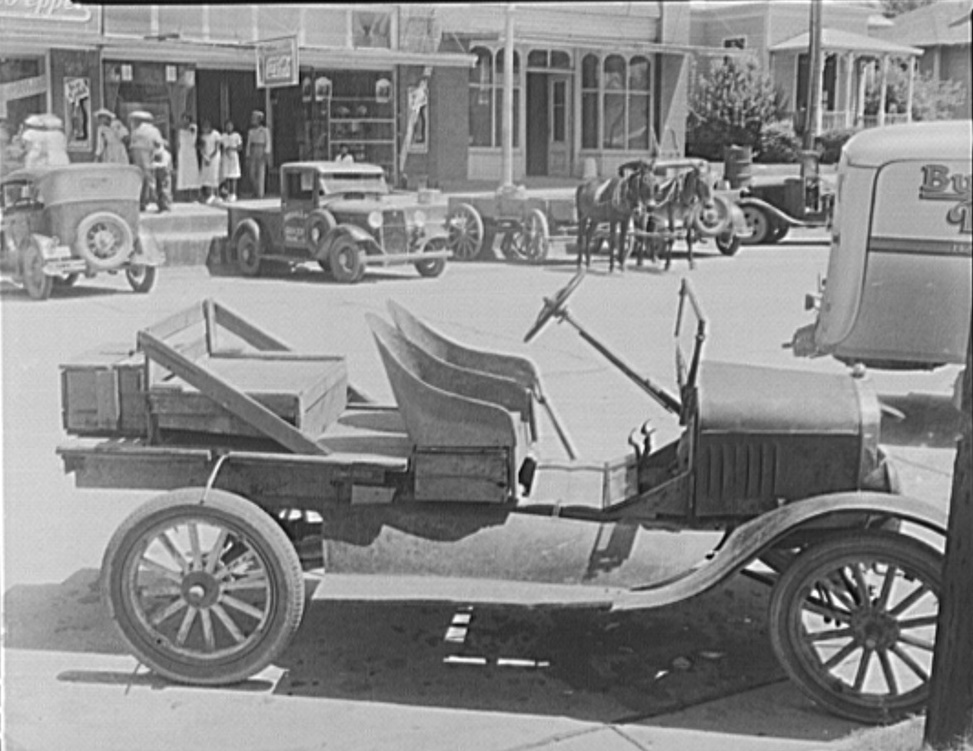

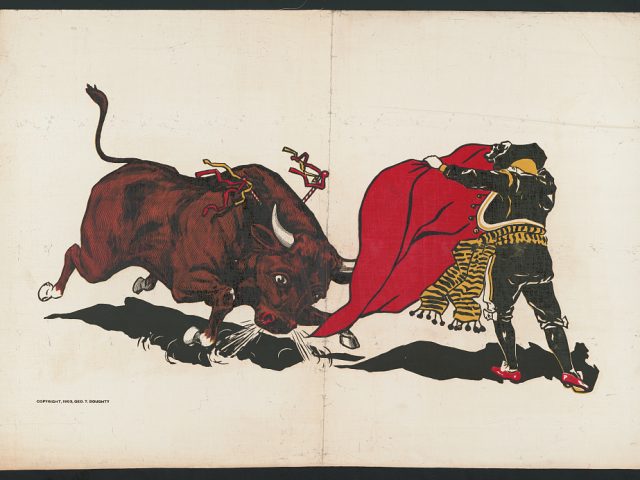
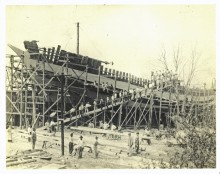
I see why they changed the name…
My great grandmother is from that area. Lots of “brick walls” in my genealogy research in that area. There was also an area around there called “Moscow Community”.
15 miles north of Marion is a logging town called Mertz. I live there. It’s history would be interesting.
Hasn’t changed much
My McKellar family came to the area in or around 1823. Duncan McKellar, my 4th great grandfather, died in Perry County in 1827. He helped found one of the early Presbyterian churches. His son, Archibald, lived in the area between Perry county and Dallas county. He married a daughter of William Craig and Sarah Woods in Perry County in 1829. Archibald’s oldest son, Duncan lived in that area until he came to Texas in the 1890’s. Duncan’s wife, Margaret Elise Blevins, had family that migrated to that area in the early years from Madison county. Margaret’s family is buried in the Blevins cemetery just north of Selma. Duncan served as a Captain in the Cofederacy.
I am a descendant of Michael McElroy (Micajah “Muckle” McElroy) and Frances Reid, daughter of
Nathan Reid. Their son, Nathan Reid McElroy married Margaret Ann Craig, daughter of William Craig and Sarah Woods. Always nice to find a new cousin.
Very interesting family history. Thanks for sharing.
I found Duncan McKellar’s marker at Fairview Cemetery in West Perry, Alabama. He features prominently in the history of the church. He must have been a staunch, devout Presbyterian. All most all of my people are buried there also.
of note: the proud home now 173 yrs. or so and counting of Judson College and Marion Military Institute. graduated me in 1951… & Gladys Grimes (Haughton) 1927 at Judson. .
My gggrandmother was Salina A. Thigpen, from Perry County, AL, who married Jacob W. Counts. I would love to know more about the 1946 photo, i.e., was this a part of Salina’s family, etc.? In any case, enjoyed the article very much!
Peggy Harmon
It seems I have
My granddaddy was born in Marion. My Great-aunts owned a store there on the main street. Their store was caddy corner to the city hall. Lucy Long and Julia Pegues were their names. They lived in the family home. The house backed up to the baseball field at Marion Institute, but now the house is gone and the land was sold to MI when they died and the house was finally closed. If I am looking at the picture of the main street, I think their store is the 2nd or 3rd from the corner (closest to the bottom edge of the picture). Their store had a wonderful long glass case that was full of candy. I always was on pins and needles waiting to be told that I could get some. Learned to LOVE vanilla cream drops! The toys and paper dolls were in the back of the store. It always seemed dark. There was an old trap door in the back that always scared me. I never knew what might come out that trap door. And, you had to go out the back door to go to the bathroom.
Memories……wonderful!!
Their store was on the right side of that picture.
My name is Irby Pope (III). My gggrandmother was Ann Tung Pegues who married Abram Pope. I grew up in Marion. I remember “Cud’n Julia” and “Cud’n Lucy” and the store well; I also loved to visit them at the store. I remember well all the Civil War relics contained in their house located near MMI as you describe it. I still own a house in Marion and go through town several times a week. Very sad but nice memories. Where do you live?
Claire McElheney Sherling
Bonnie Barnette Dunn
Interesting read!
Interesting. White settlement of the Chicago area was also significantly affected by a treaty with Native Americans. White settlement did not begin in earnest until Native American tribes in the area left and moved west of the Mississippi River by 1835, under the terms of an 1832 treaty.
My 2GGrandfather was born in Perry County, AL in 1815. His name was William H. Templeton. I only know he married Elizabeth Falkner about 1840+, had two sons, but, then, she remarries and moves to Walker County, TX. I have been trying for over 2 years to put the pieces together without any help. I don’t know his parents and have no idea what happened to him. If anyone can be helpful, I’d be grateful.
Steve Templeton
[…] a great book for genealogists researching early citizens of Perry County, Alabama. Brush Creek in Perry county, Alabama was settled before Alabama became a state. The area was […]
Wow…Very cool pics of Marion from back in the day. Looks like it was a bustling town back then, when cotton was king. 🙂
Looks like a busy town back in the day
Interesting
The most beautiful Chapel on th Marion campus!